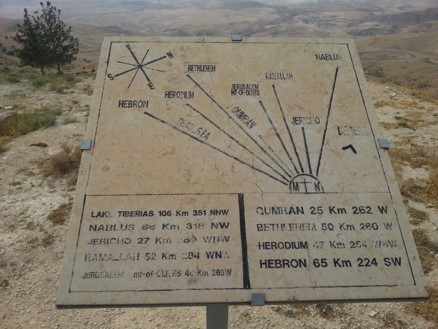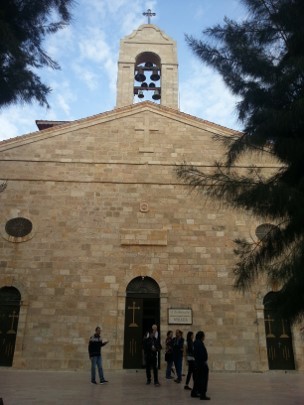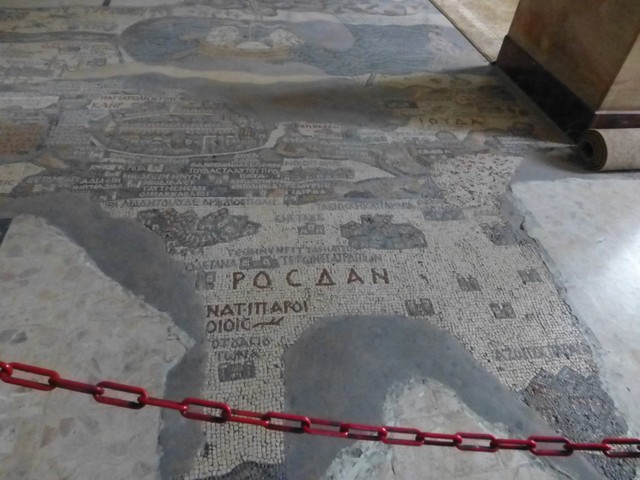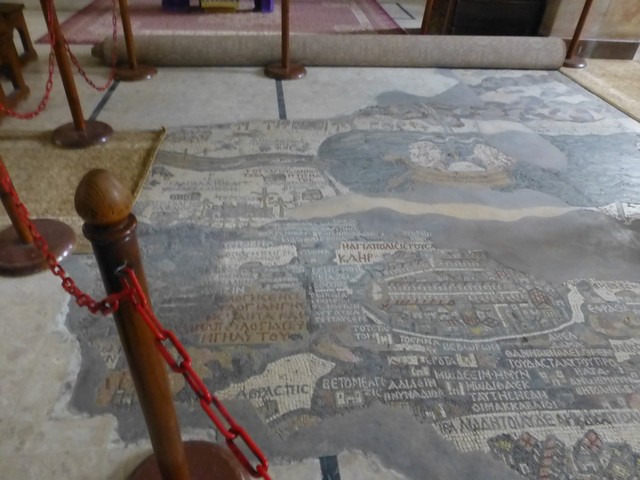Holy Land Sabbath Morning Presentation
Colette and Bob Sharer
Sabbath, September 15, 2018
©2018 by Colette and Bob Sharer
(Bob and Colette take turns narrating.)
Good morning! This last March, Colette, my sister-in-law, Nancy, and I took a wonderful 3- week trip to Israel and Jordan. We saw many incredible sites and took over 3,000 pictures. Fortunately for you, you will not have to view all of them with us! We have picked out our most memorable sites and will share our thoughts on them.
Our tour, “Tracing the Footsteps of Jesus,” was led by SDA pastor and lifetime scholar of The Holy Lands, Pastor Tony Moore. He often gives presentations along with Pastor Sean Boonstra at Sean’s Evangelistic series, and this is how we found out about him. There were 25 SDA’s on the trip and one considering Adventism based on meetings she recently attended. We got to know and love our fellow tour mates and Pastor Tony and his wife, Helen. We also had a Christian Palestinian as a tour guide, Sakkur, as he could get us into some places where Tony could not. He had been born and raised in Bethlehem.
We started our tour in Jerusalem, then traveled south to the land of Abraham, over to Masada and the Dead Sea, then up to Jericho and Galilee, home of the majority of Jesus’ ministry and miracles, Nazareth, Dan, Bethany, Haifa and Caesarea Maratima, and back to Jerusalem. We spent the last week in Jordan.
Our most meaningful sites followed the life of Jesus. His life began in Nazareth , today a thriving city in Galilee, before he was born, where his young mother Mary lived with her family. She had recently become engaged to Joseph.
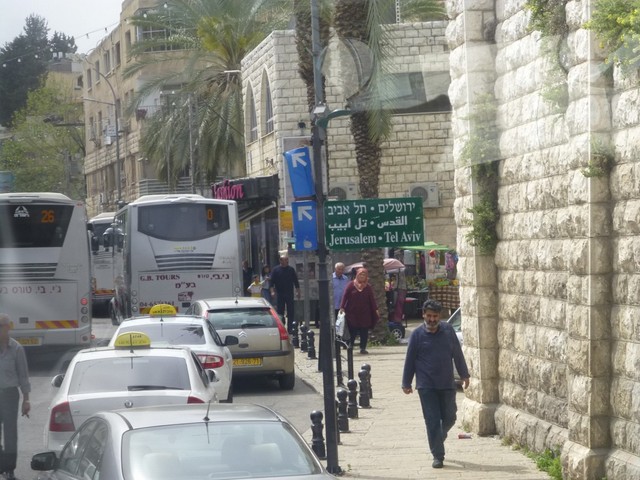
Nazareth was a small village of only a few hundred in Jesus’ day. This photo, under the Church of the Annunciation, is a depiction of what type of house Mary would have lived in, a cave home constructed completely out of stone, as most homes were.
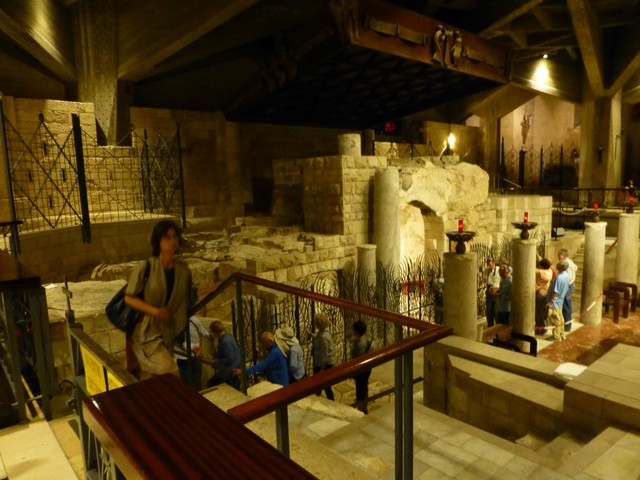
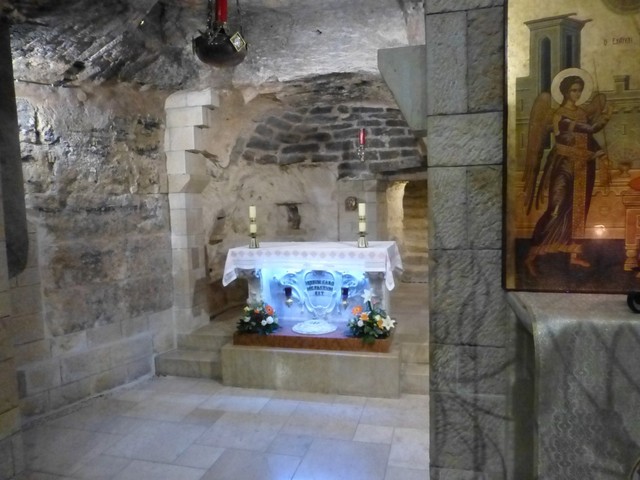
The photos below are at a site in Nazareth which showed what life was like in the time of Jesus. We ate a wonderful meal there, with food Jesus would probably have eaten, including some yummy date honey. There was also an olive press similar to the presses used in Jesus’ day.
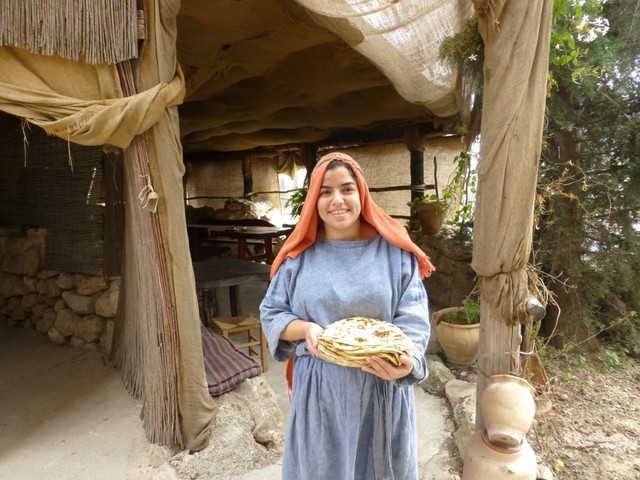
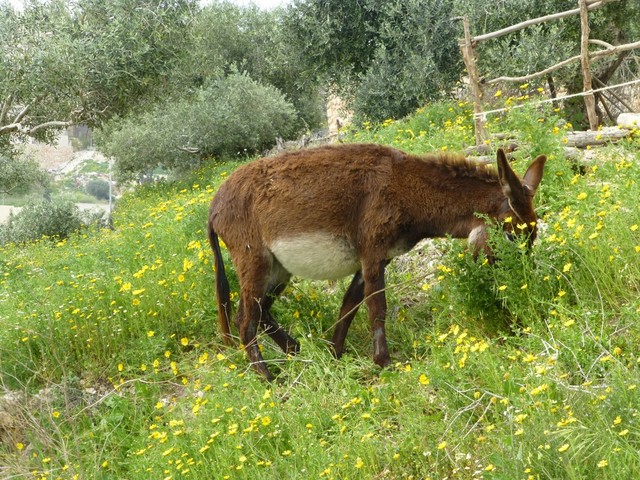
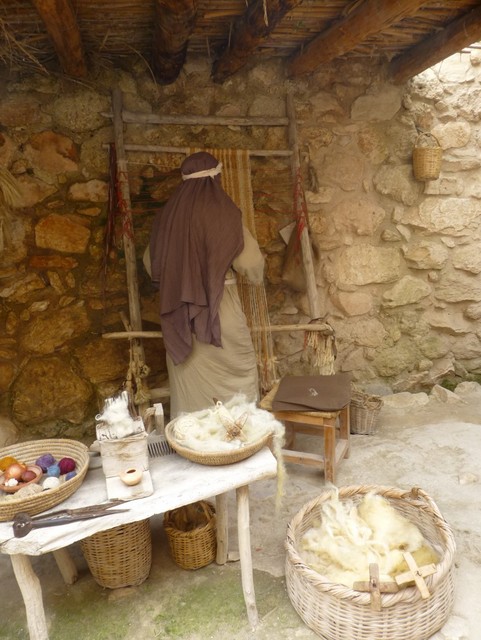

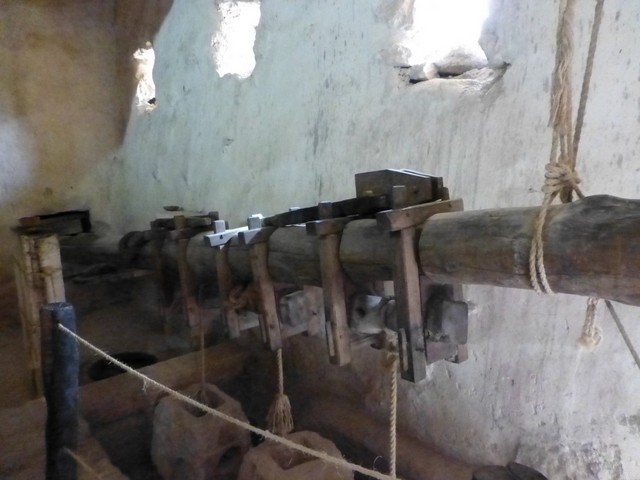




Of course, we also know that after returning from Egypt, this is where Jesus grew up. He would have started studying the Written Torah at age 5 and continued his studies until age 18. He, like most boys, would have memorized the first five books of Moses and perhaps the entire Hebrew Scriptures. I like to imagine him a fantastic scholar and athlete who also worked hard with his father and had lots of friends.
Herod Antipas was rebuilding the capital of Galilee, Sepphoris, which was only 4 miles from Nazareth, during Jesus’ youth and young adult years. This major capital works project would have consumed labor from the surrounding areas, and it is very likely that Jesus and Joseph worked here. The Bible says Joseph was a carpenter, but the word used in the Greek Bible, tekton, means builder. In this part of the world homes and buildings were constructed from stone or mud brick and stucco. So, it is likely that Joseph and Jesus really worked with stone.
When Mary began to show her pregnancy, Joseph, wanting to help Mary avoid scandal as much as possible, took her south to a small village outside of Jerusalem called “En Kerem,” which means “spring of the vineyard.” This is where Mary’s cousin, Elizabeth, lived. Elizabeth was pregnant with John the Baptist.


Mary lived here quietly until she was ready to give birth. This spring is no doubt where she and Elizabeth collected their water, as it is the only spring in En Kerem and has been renamed “Mary’s Spring.”



There is a beautiful little church in En Kerem honoring John the Baptist’s birthplace and home.
Joseph took the very pregnant Mary to Bethlehem, where she gave birth to Jesus. Based on the history of the times, most homes began as caves. As you prospered, you built on top of the cave. Most homes kept their animals in the cave below the home, where it was warm and safe from robbers and wild animals. When Constantine’s mother, Helena, a Christian, came to Jerusalem in 330AD, she had a church built over the site that early church tradition identified as the place of Jesus’ birth. It is the oldest church in Israel.
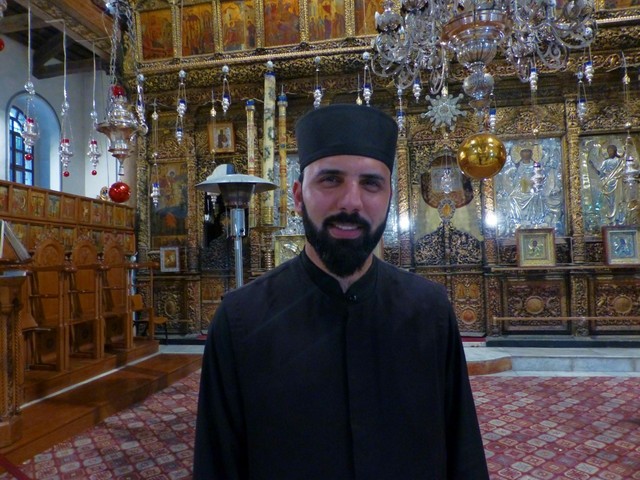
Even the Muslims, who came 300 years later, loved this church because of the frescoes of the wise men, who were from the middle east! It seems likely that this was the site, as the Roman Emperor Hadrian desecrated this cave by building a temple to Adonis over it in AD135, at the height of Christian persecution in the Roman world.
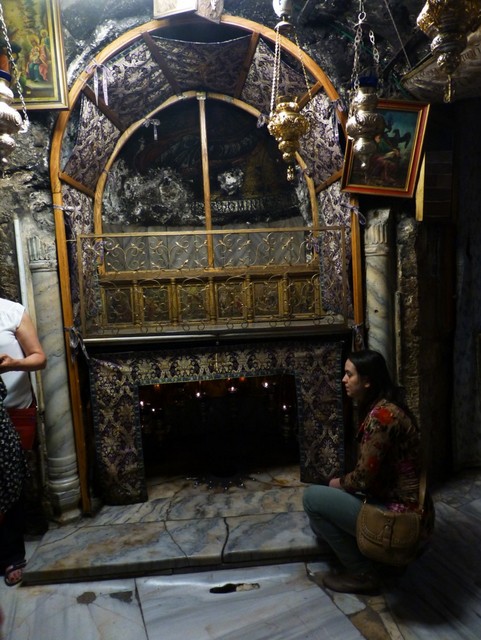
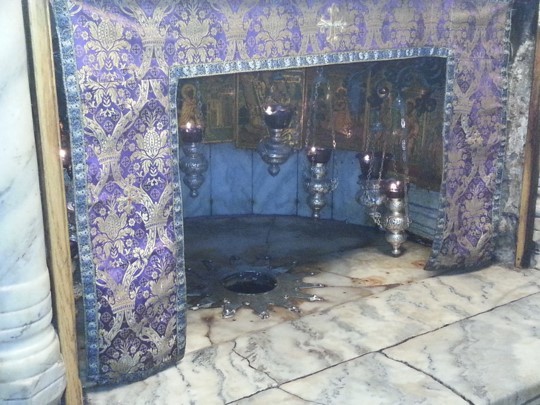
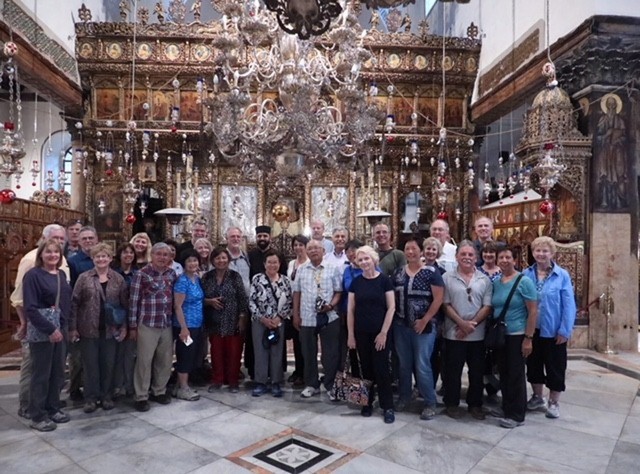
Note: The Stars and Bucks coffee house near the church, as Starbucks is not allowed in Israel!

Jesus began his ministry at the age of 30 in Galilee, after he had been baptized by his cousin, John the Baptist. John lived and preached across the Jordan River in what is now the country of Jordan. It was called Bethany Beyond the Jordan. The Bible refers to the thicket of the Jordan where trees and bushes grew so thick that wild animals, including lions and tigers, could find refuge there! It still looks very wild today.
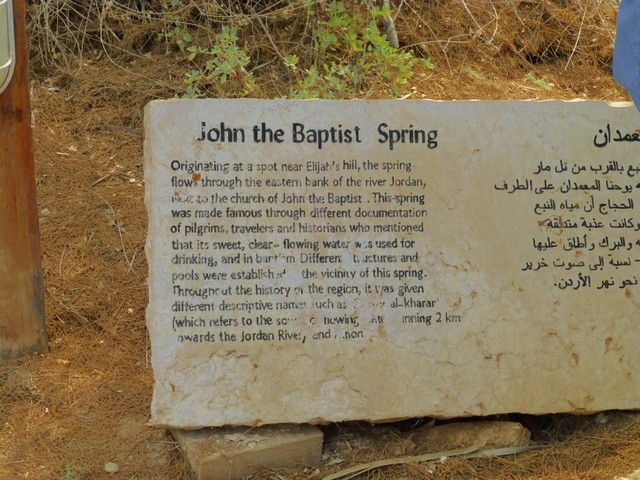
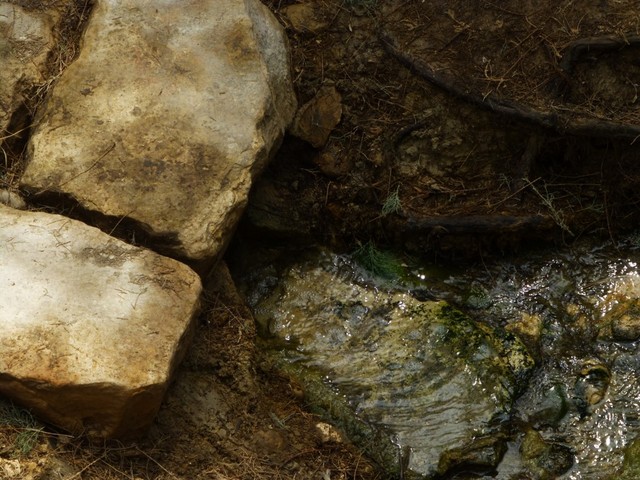
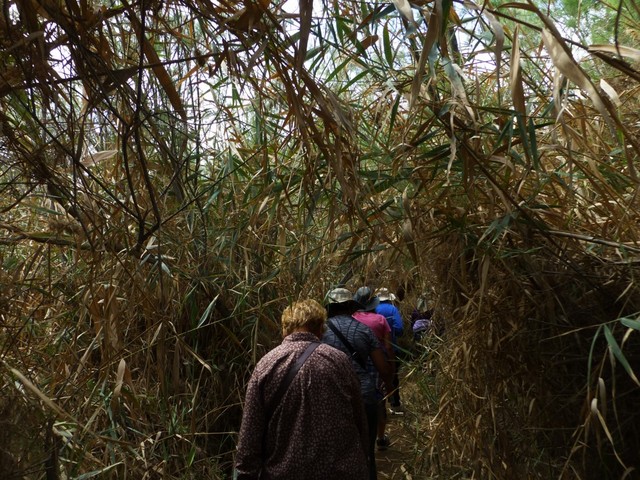
The Jordan River had narrowed considerably since Jesus’ day, on its way from the Sea of Galilee to the Dead Sea (both lakes!). The water needs of the country of Israel have caused this reduction in flow, so Jesus’ actual baptismal site is about ¼ of a mile from today’s river. You can see it is a very popular spot for baptisms , but only on the Israel side! Baptisms are not allowed in Jordan.
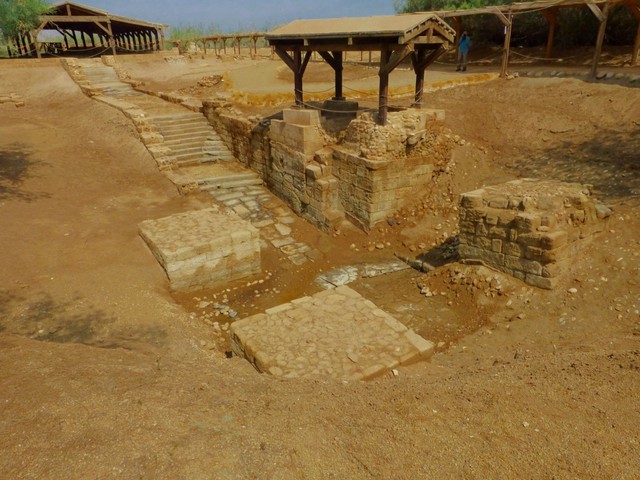
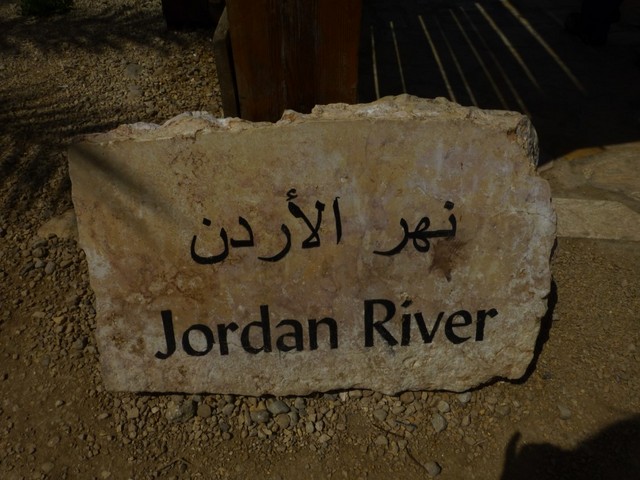
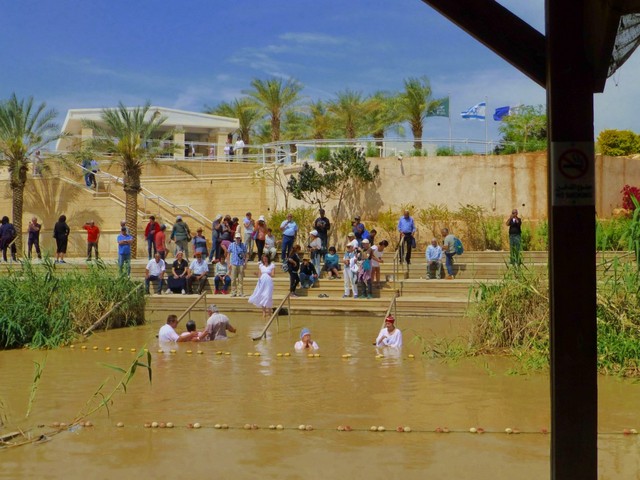

There are many churches built around the Sea of Galilee, where Jesus spent most of his three-year ministry. The Church of the Multiplication commemorates the feeding of the 5,000. The Primacy Church commemorates the fish breakfast Jesus prepared for the disciples after His resurrection.
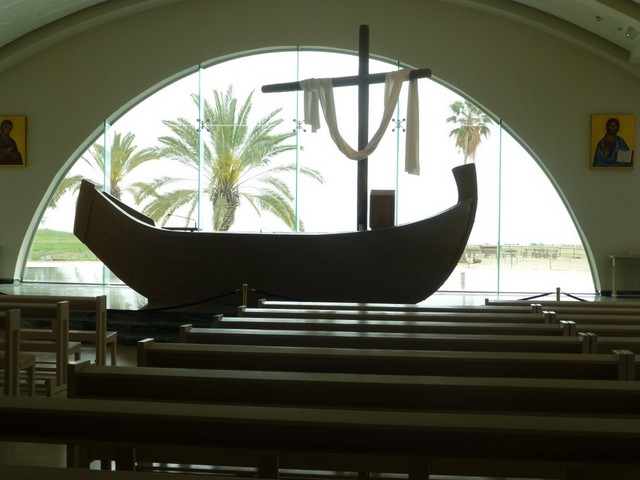
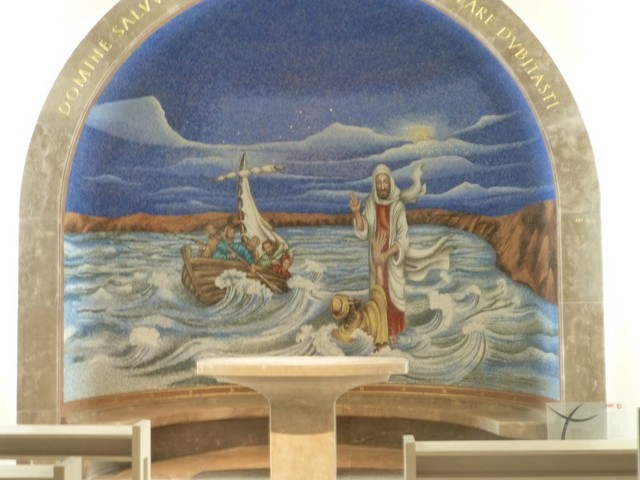
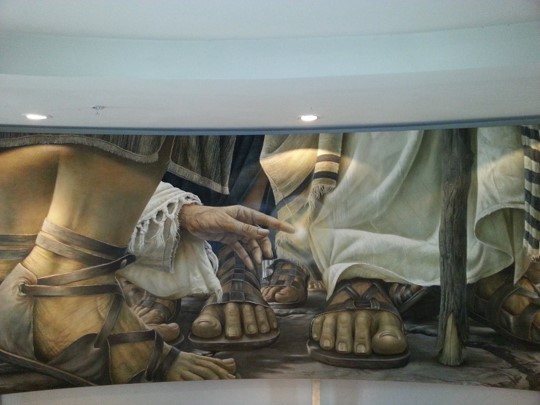
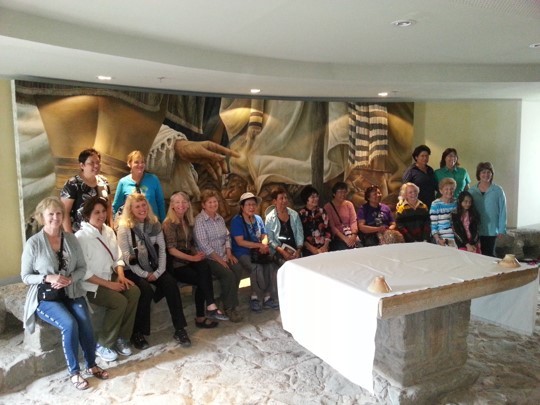
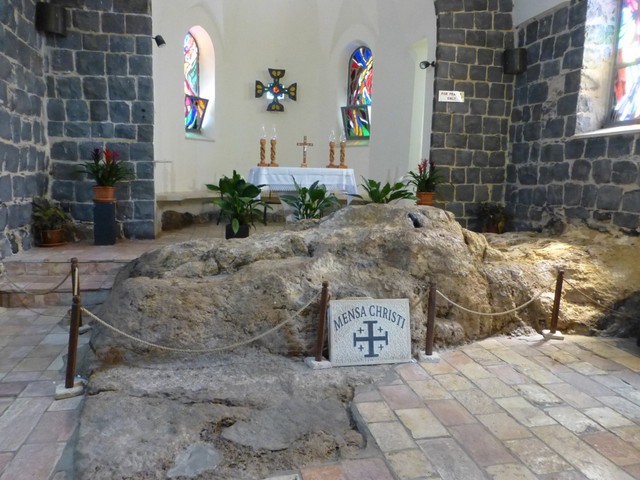
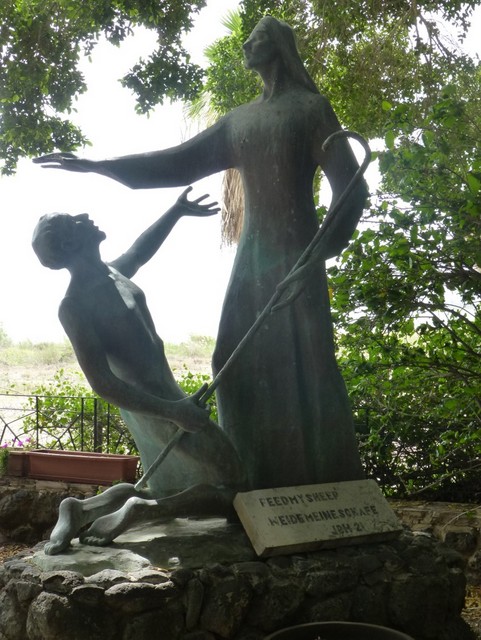
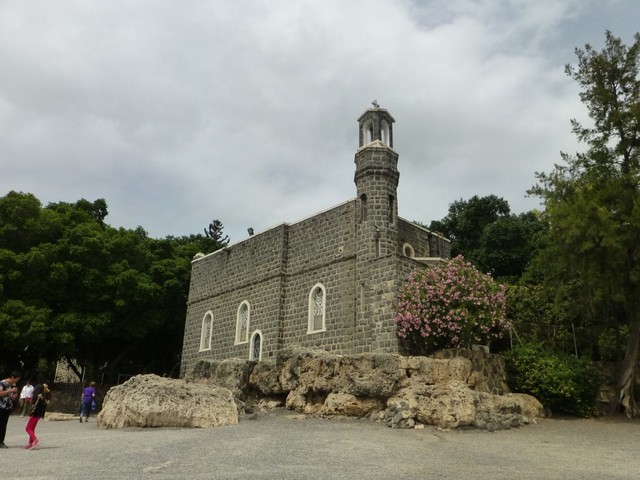
Capernaum, Jesus’ own town, is the location of over ¼ of Jesus’ recorded miracles. It was here that Jesus first confronted a demon-possessed man and raised Jairus’ daughter from the dead, cast out the demon on the Sabbath in the synagogue, healed Peter’s mother-in-law on the Sabbath, and where friends dropped the paralyzed man through the roof to be healed. It is where a very ill woman touched the hem of Jesus’ robe and He healed her due to her faith!
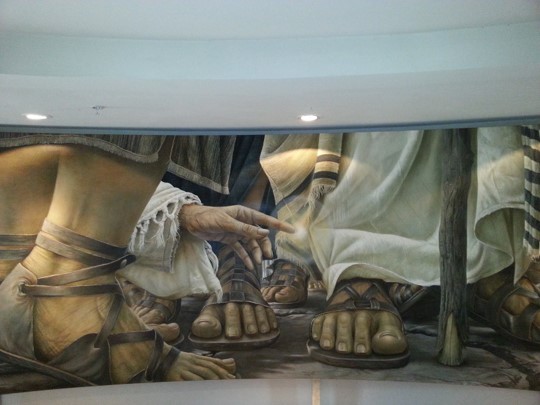
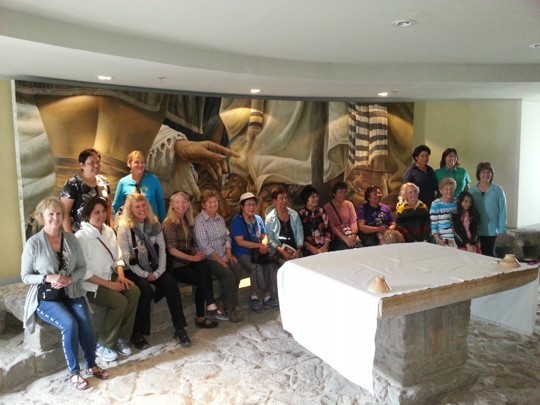
It was also the home of 5 of Jesus’ disciples, Peter, James, John, Andrew, and Levi Matthew, the tax collector. There are also many excavation “tels” around the area. The excavated beautiful white synagogue from Jesus’ day was built by the Roman Centurion and is most certainly where Jesus worshipped.
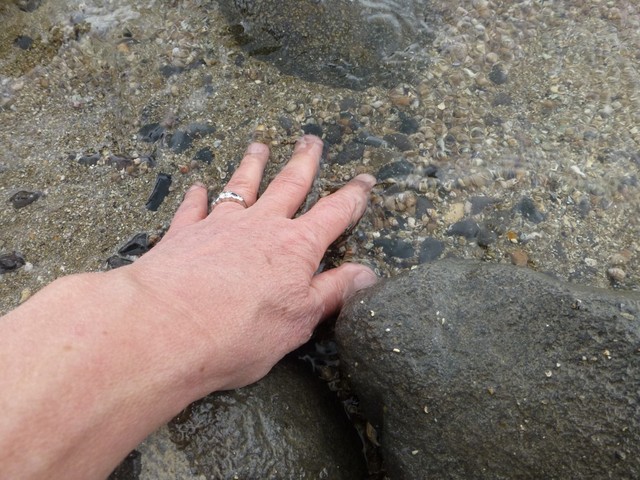
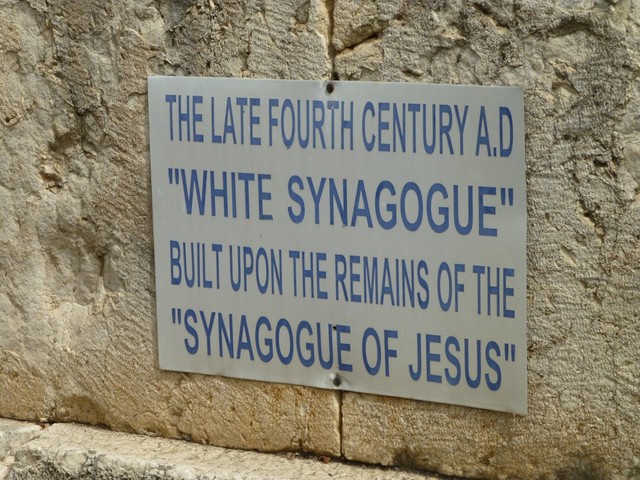
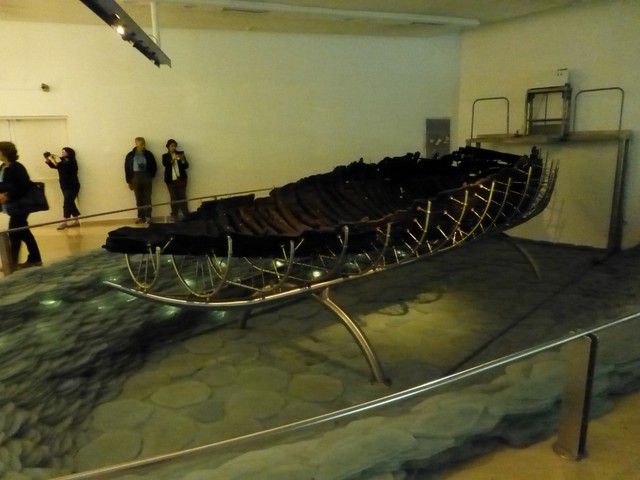
This is a fishing boat found in the mud during a severe drought 20 years ago, quite well preserved !
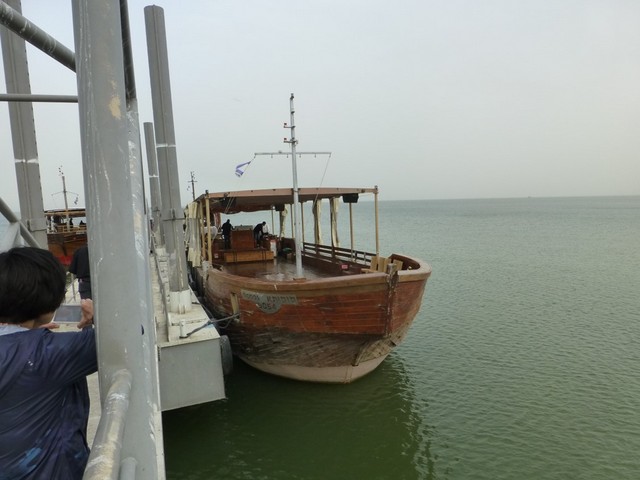
Our boat trip on the Sea of Galilee reminded us of when the storm came up and Jesus calmed the waters, and when Jesus walked on the Sea of Galilee.
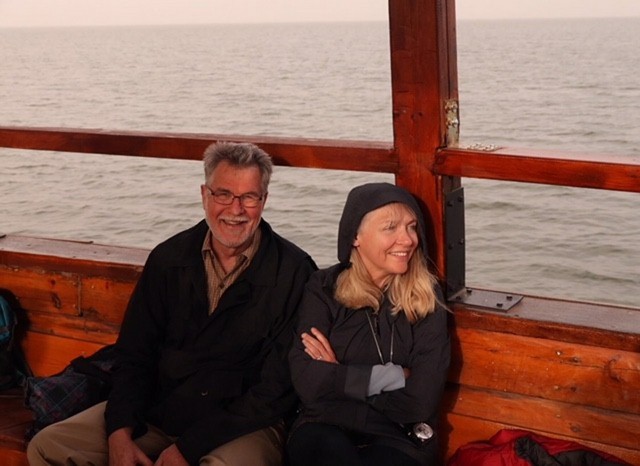
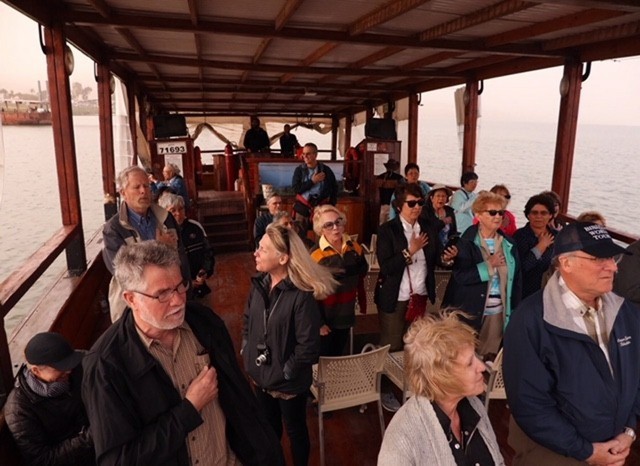
The hill to the North of the Sea of Galilee is known as the Mount of Beatitudes. A church was built on the top of this mount. Below the mount is a grotto, upon which Jesus ascended when he taught the Beatitudes. This cave is called Eremos, which means solitude. The area is very beautiful!
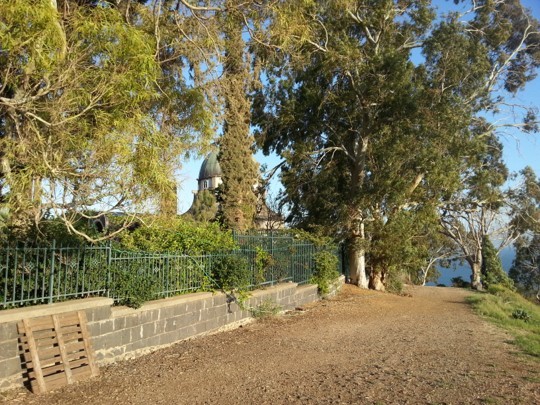
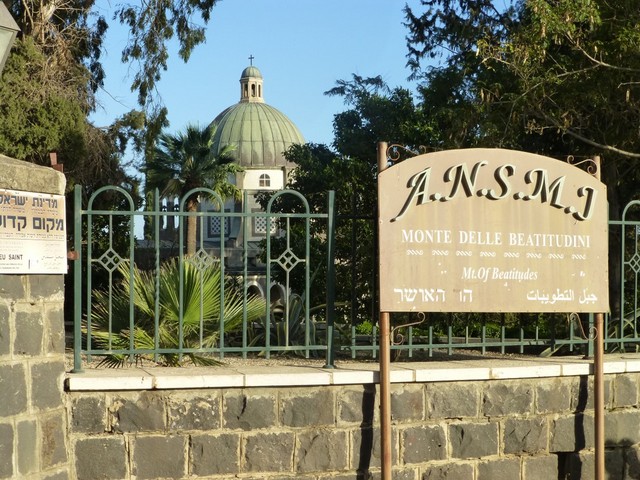
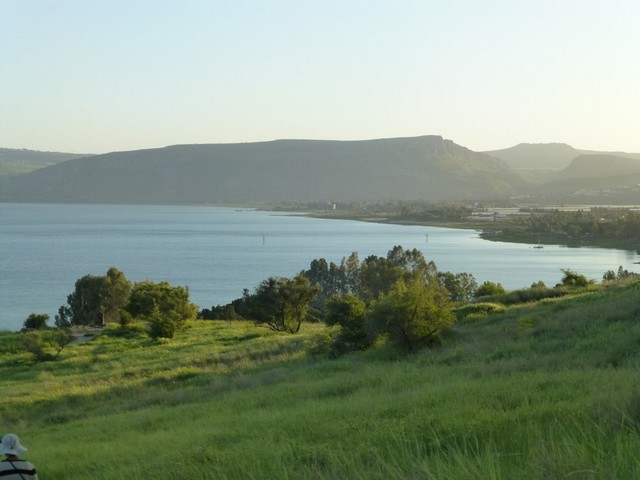
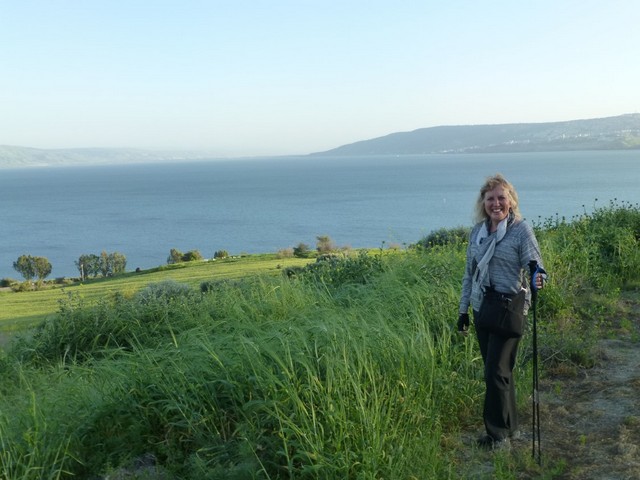
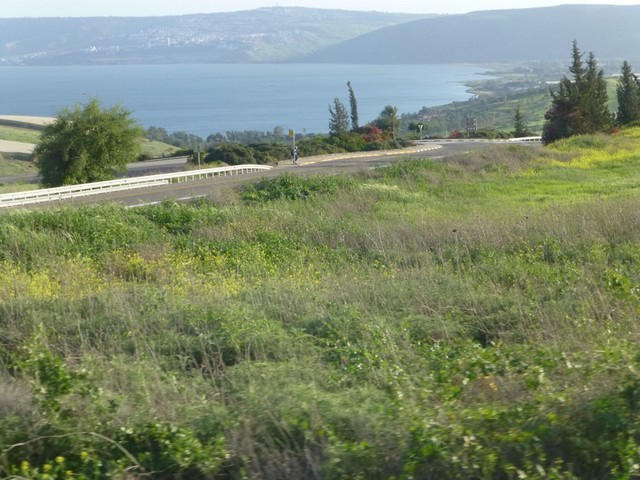

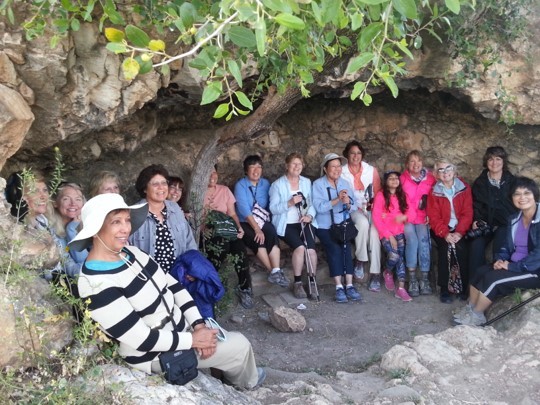
Jacob’s Well: This 137 ft. deep well in Shechem, Samaria, seems to be the place where Jesus met the Samaritan woman. When the British surveyed the land in the 19th century, they found over 20 springs in this area, as you can see from this picture the water just pours out of the rocks in this little town; but only one well.
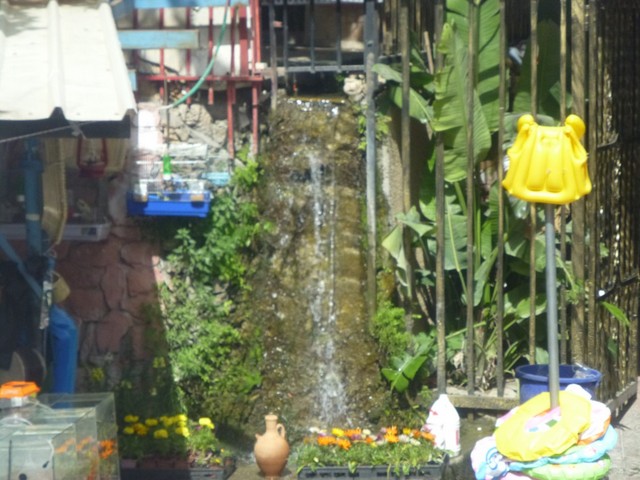
With water so abundant, why would anyone dig a well? As a foreigner, Jacob wanted to establish his own water rites.
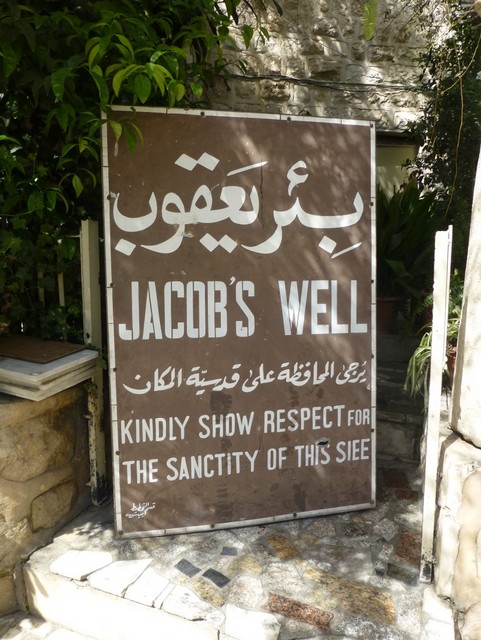
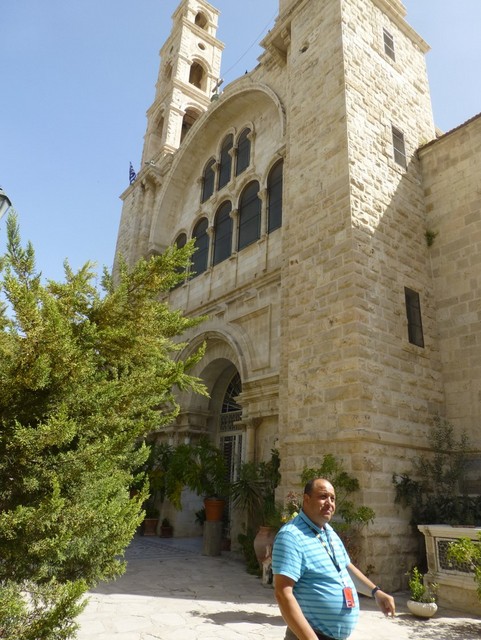
After the death of Solomon, Israel was divided: Judah in the South with its capital in Jerusalem and Israel in the North with its capital at Shechem. The Israelites in the North intermarried with the local population and the Jews from Judah looked down upon them for this. The Samaritans, however, always considered themselves true Israelites. Today Jewish commentators identify them as a “mixed breed.” Today, Samaritans live according to the strict rules of Moses, sacrifice the Passover lamb, and possess an ancient copy of the Torah.
Because of this prejudice, the Jews of Jesus’ day tried to avoid this area if possible, taking the longer route through the Jordan Valley, even though this added several days to their journey to and from Jerusalem. Jesus broke through all the prejudice by taking His disciples into Samaria and encountering a Samaritan woman at Jacob’s well. He asked her for a drink of water and ended up giving her the water of life eternal! She was the first person that Jesus revealed His Messiahship to! What a wonderful way Jesus showed us what it is to be a Christian—that we love and care for everyone. And remember Jesus’ parable about The Good Samaritan, my favorite parable.
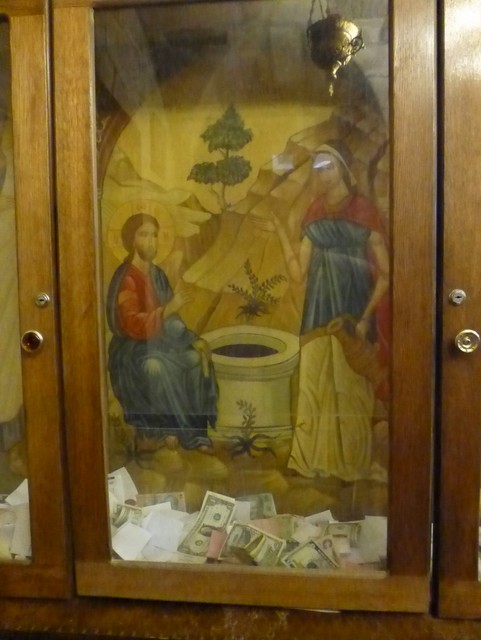
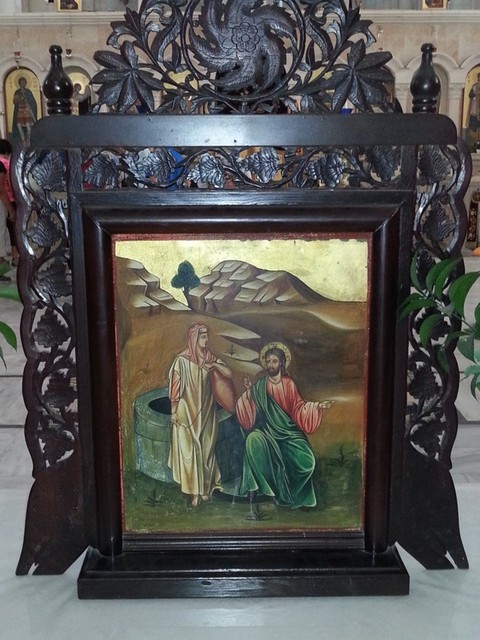
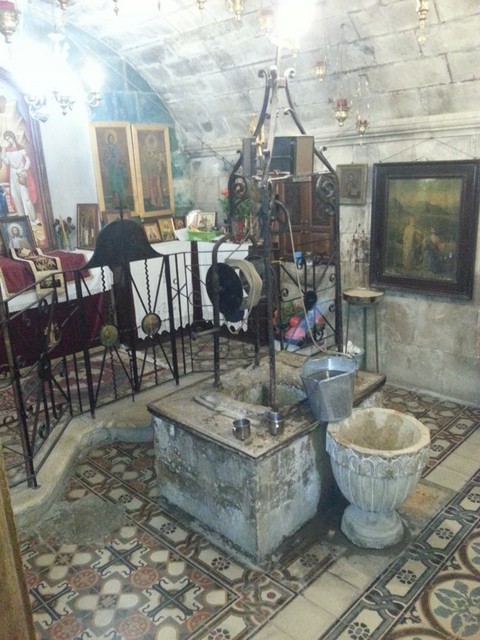
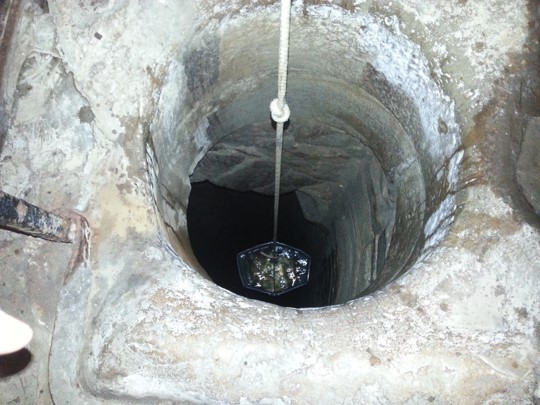

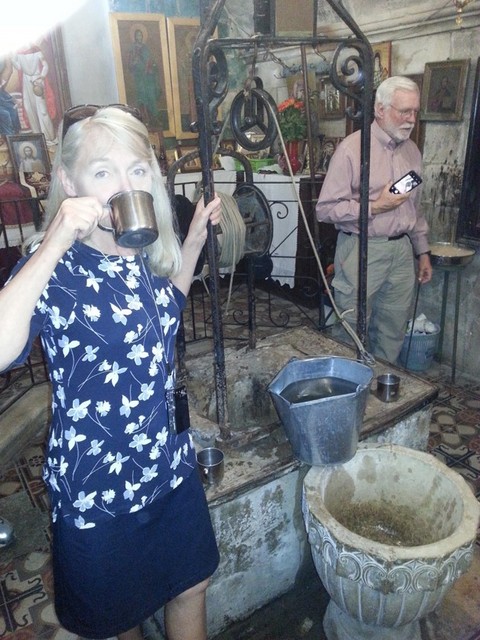
Bethany: this village is only five miles from Jerusalem. It was the home of Jesus’ close friends Mary, Martha, and Lazarus. It was also the home of Simon the Leper, a Pharisee who had a banquet for Jesus during which Mary anointed Jesus with perfume worth a year’s wages. Here Jesus performed His most famous miracle, raising Lazarus who had been dead for four days, from the grave. Can you imagine what it would have been like to see Lazarus emerge from his tomb!
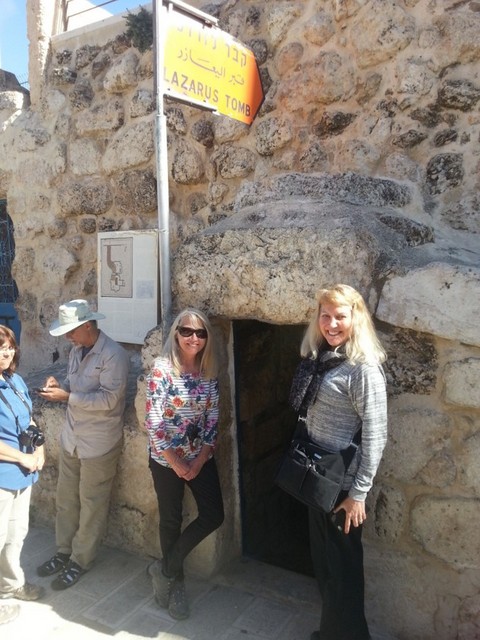
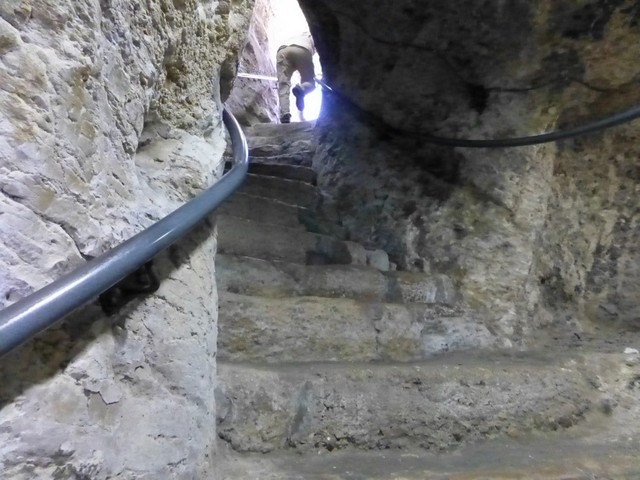
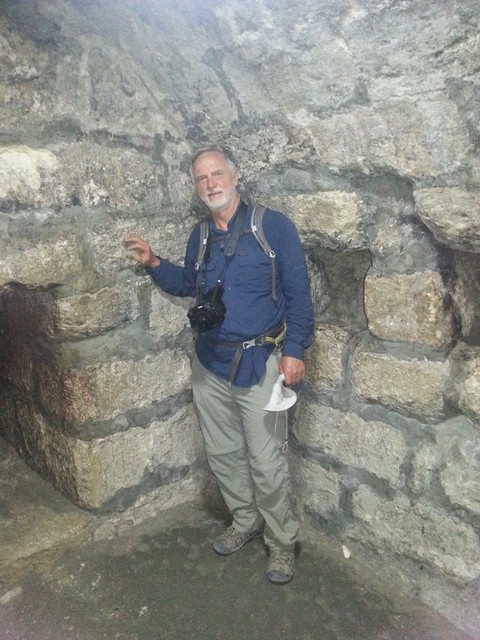
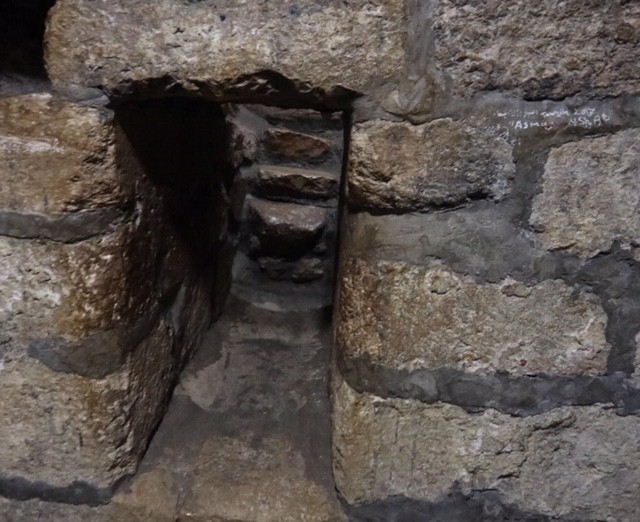
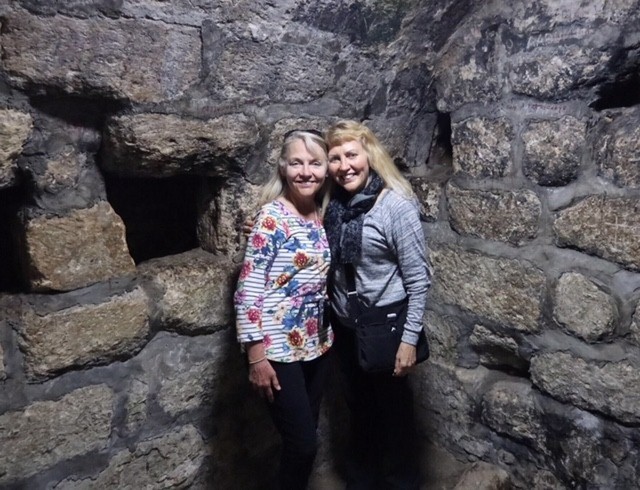
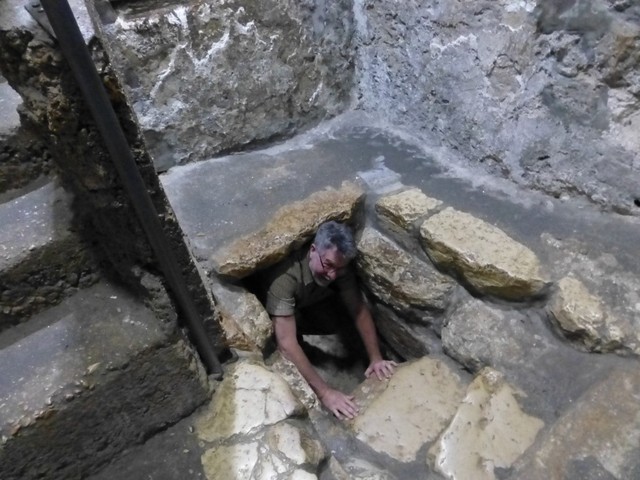
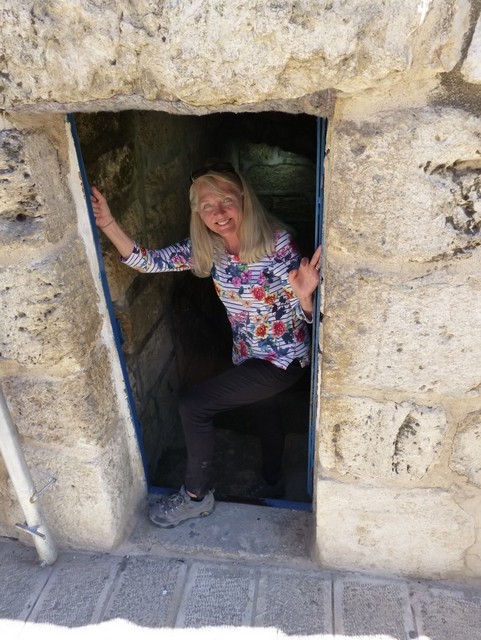
Jerusalem:
The Mount of Olives is where Jesus looked over to the beautiful city of Jerusalem and wept, knowing and predicting that soon, in just a matter of decades, it would be destroyed by the Romans in AD70.
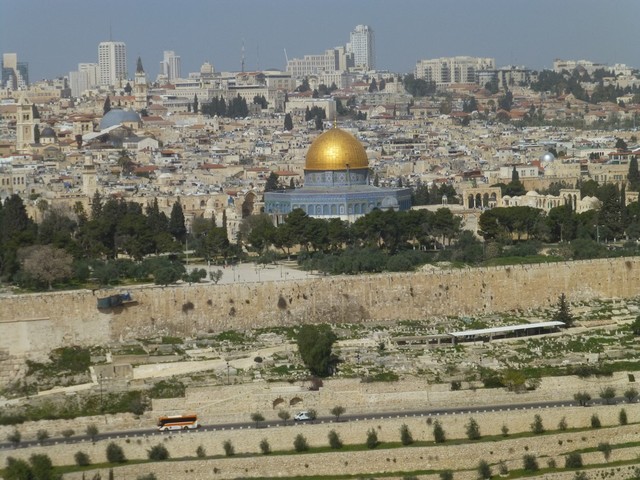

There is a beautiful church, shaped like a teardrop, near the Garden of Gethsemane.
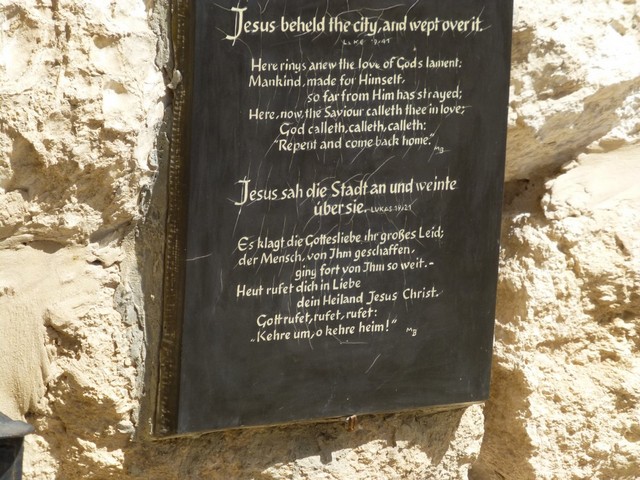
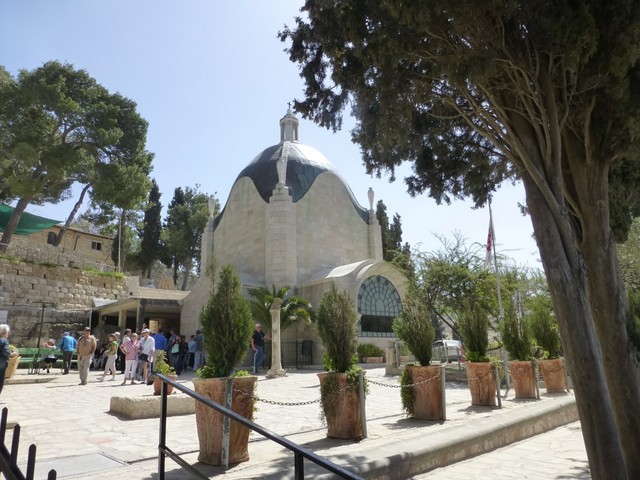
Gethsemane, which means “place of oil” was not actually a garden but an olive orchard. Archaeological evidence suggests that The Cave of Gethsemane was used for pressing olives. Since this was done in the fall, it would have been a welcome retreat for Jesus and the disciples to take refuge from the cold damp nights in the spring. It has been a chapel since the 4th century .
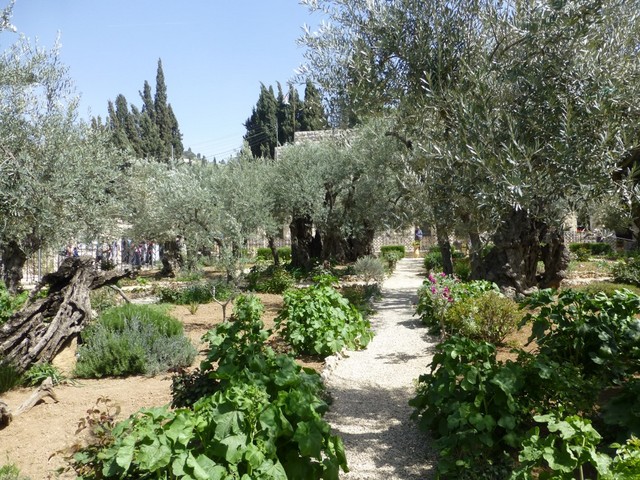
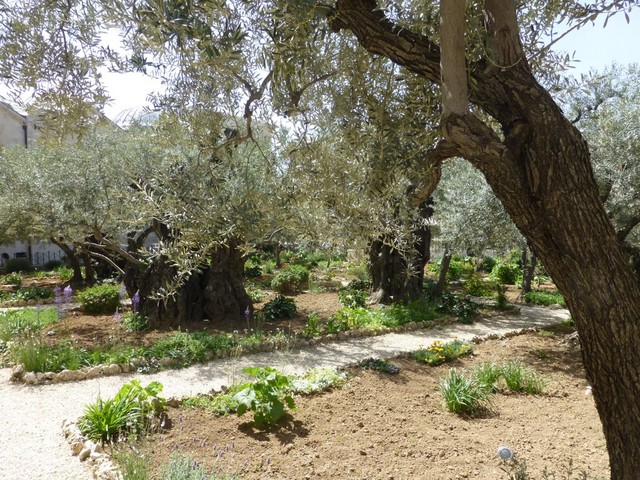
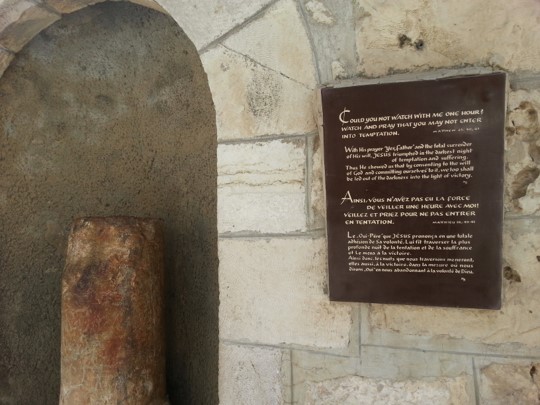
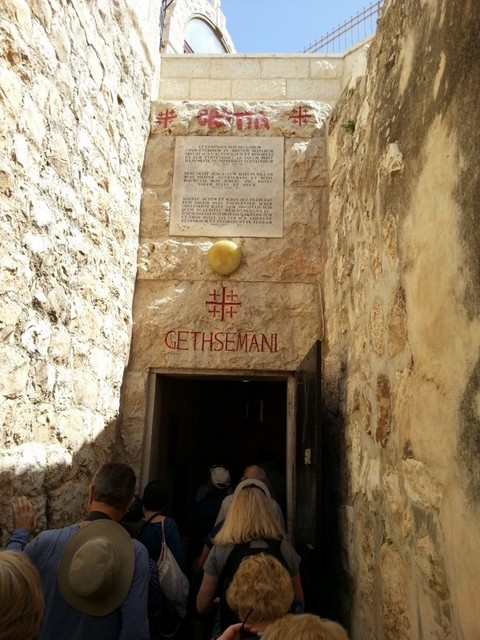
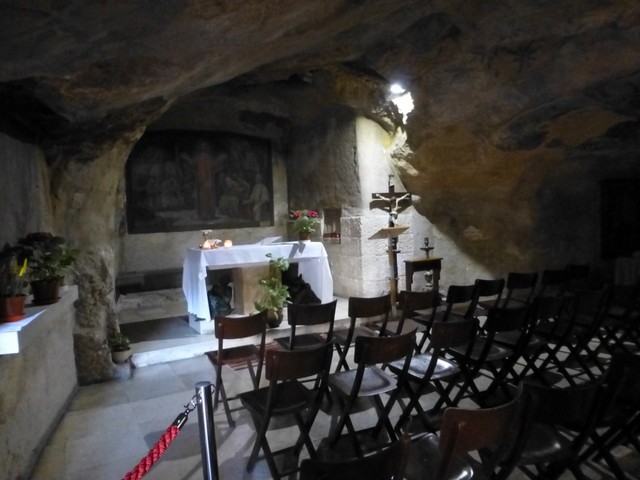
On the top of the Mount of Olives, there is a lovely church called Bethpage commemorating where Jesus began his triumphal entry into Jerusalem on the back of a donkey during Passover. Pilgrims to Jerusalem today still commemorate this journey. And I, wonder of wonders, got to hold a sweet little lamb. Jesus would have come down to save me, his little lamb, even if I had been the only person in the world to sin!
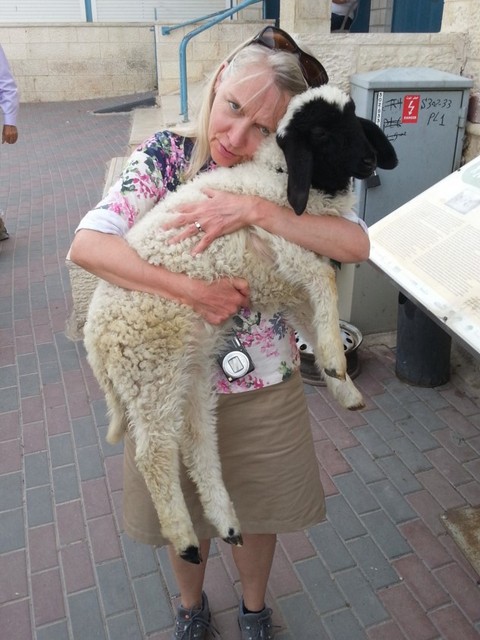
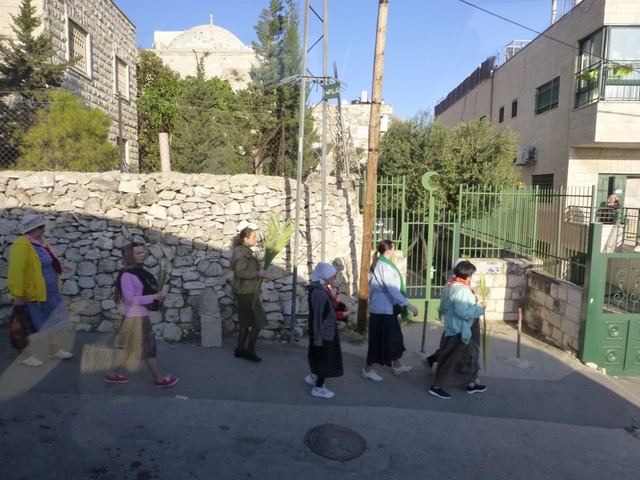
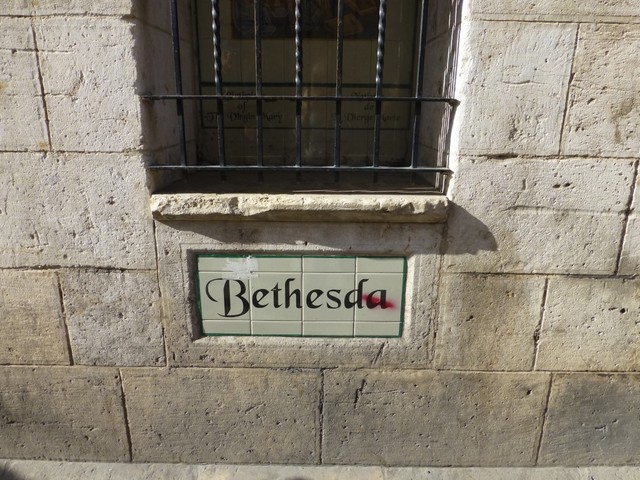
Back in the old city, Jesus visited the Pool of Bethesda and took pity upon a man who had lain by the pool for 38 years hoping to be healed. Jesus told him to “take up his mat and walk,” and the man did! I always loved this story, as the man was so happy and grateful and told everyone what had happened.
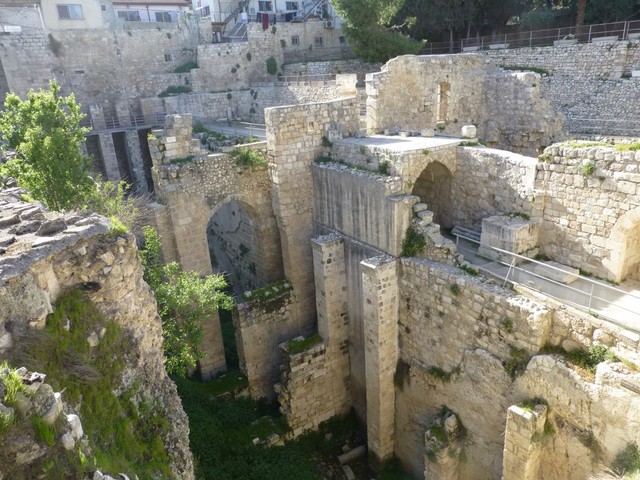
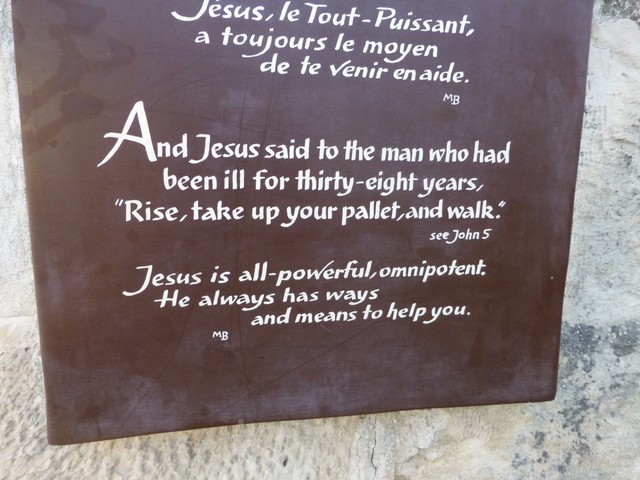
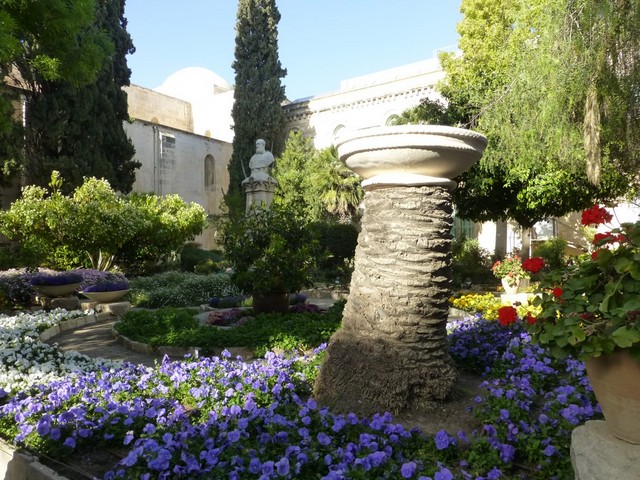
This beautiful building and room are built over the site where most people believe The Last Supper took place.
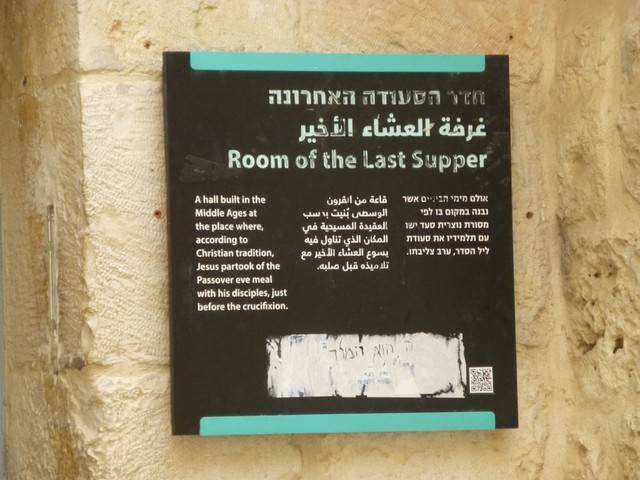
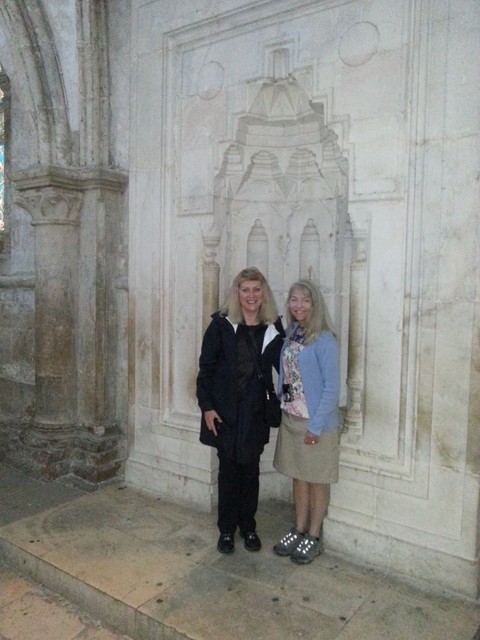
The Church of St. Peter in Gallicantu is built over the traditional palace of Caiaphas where Jesus was tried.
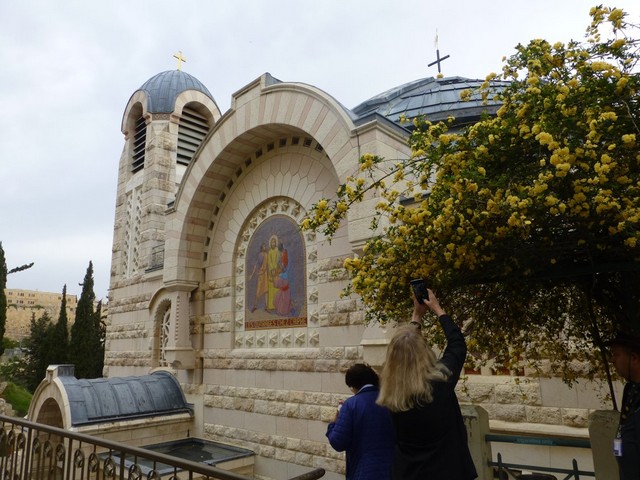
Downstairs you come to the courtyard where Peter and John were likely watching the trial of Jesus near a fire and where poor Peter denied Jesus three times. A second century BC stairway outside the palace connected the upper city to the lower city. It is likely that Jesus walked down this very stairway from the upper room to reach the Mt. of Olives and Gethsemane to pray with his disciples. He would have been brought back up these stairs to be tried by Caiaphas.
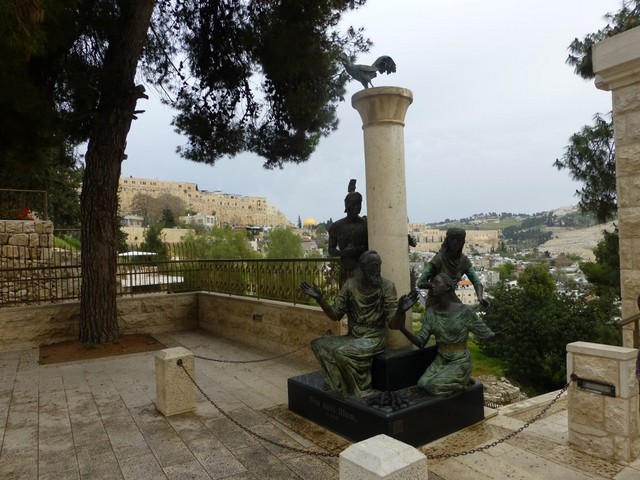
These are also most probably the stairs that Peter ran down after the rooster crowed the third time . On the lower level there are storage rooms that were likely used as a holding area for prisoners, and likely held Jesus before he was turned over to Pilate.
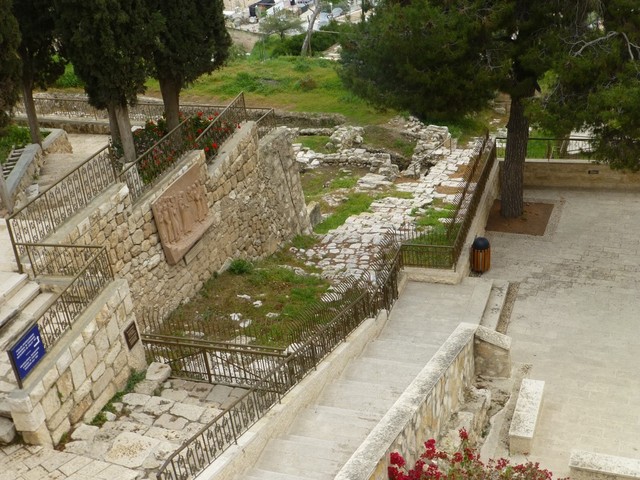
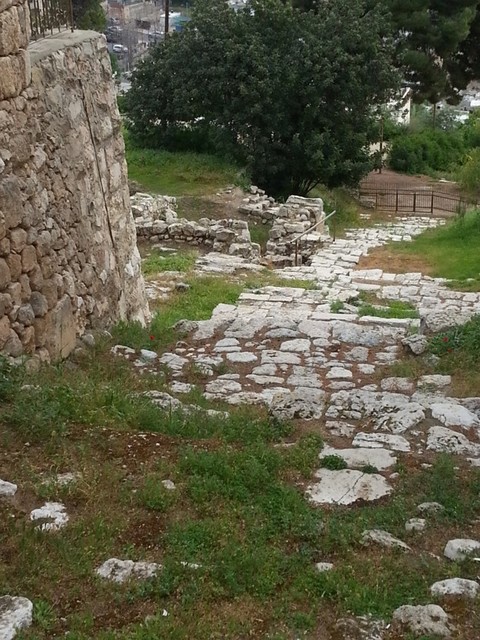
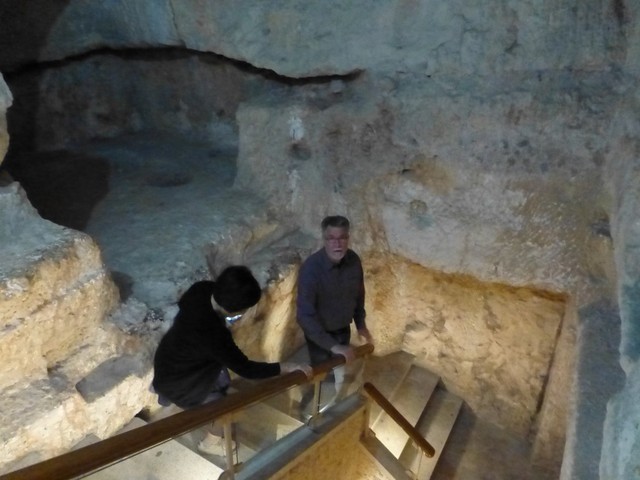
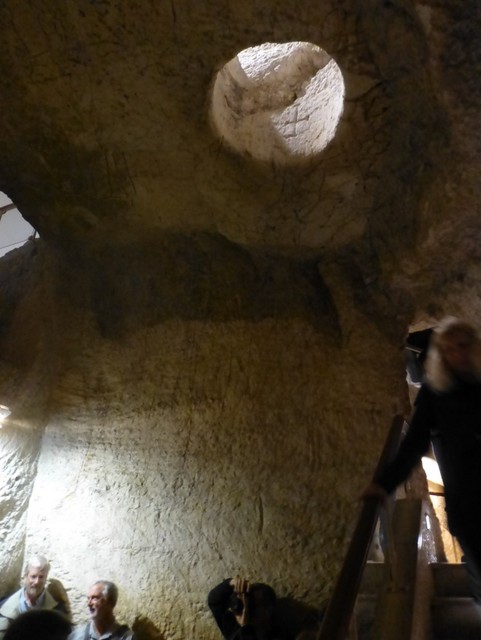
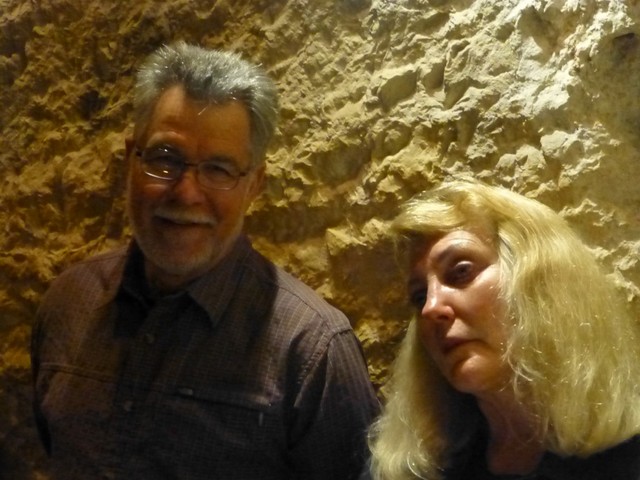
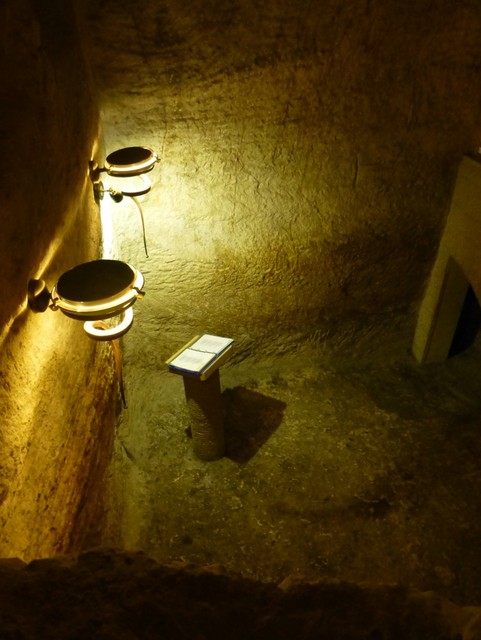
As we walk along, we come to The Ecce Homo Arch which was built over the street where Pilate judged Jesus and then addressed the crowd, saying “Behold the Man.”
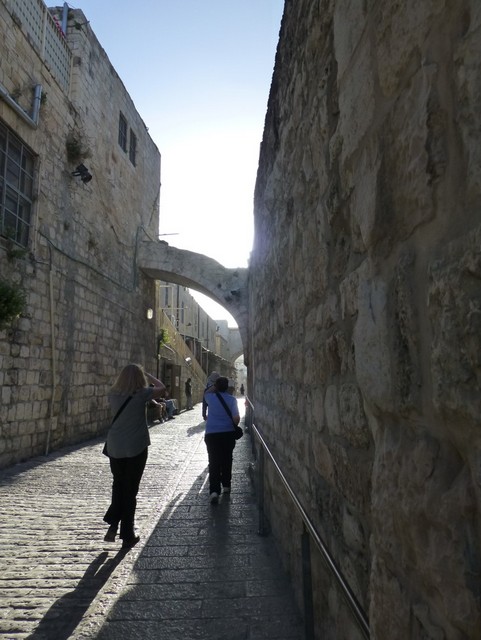
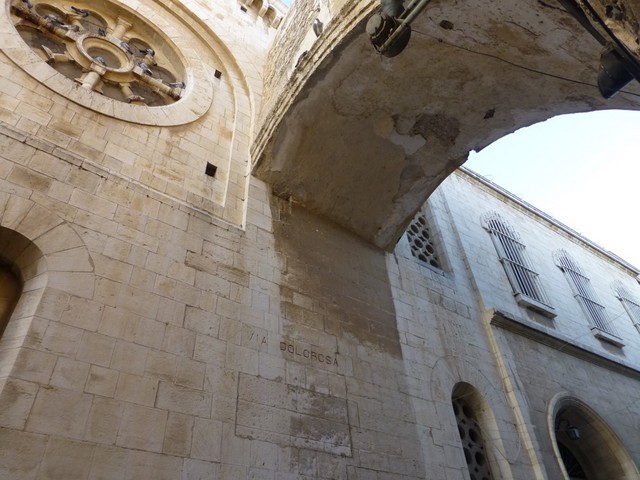
Pilate then handed Jesus over to the soldiers who took charge of Jesus and placed a cross upon his back and took him to Golgotha, where the Church of the Holy Sepulcher now stands.

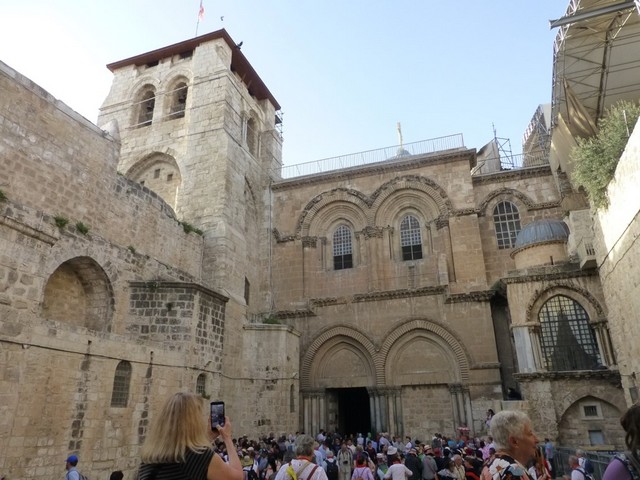
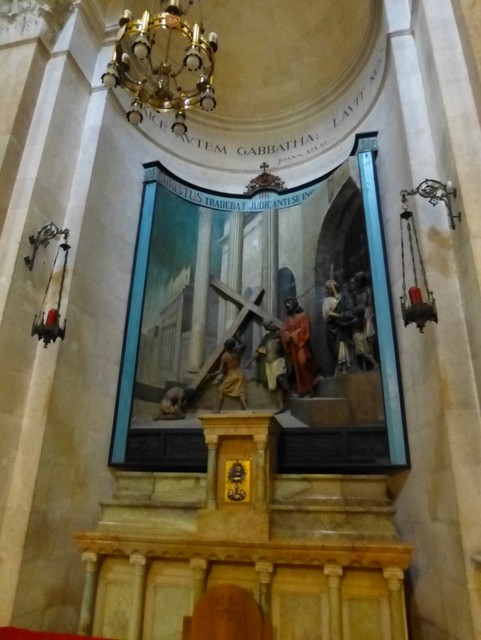
The Church of the Holy Sepulcher was built in the early 4th century upon the site where early Christians located Calvary and the tomb of Jesus. When Constantine’s mother, Helena, built the church, she first had to tear down a Roman temple to Venus! It was a place of execution and was outside the city of Jerusalem in Jesus’ day. A section of rock can be seen through the glass below the Chapel of Calvary. It had been a rock quarry until the 5th century BC but abandoned due to the poor quality of the stone. Multiple tombs have been found in this area, including this tomb in a room just behind Jesus’ “official” tomb.
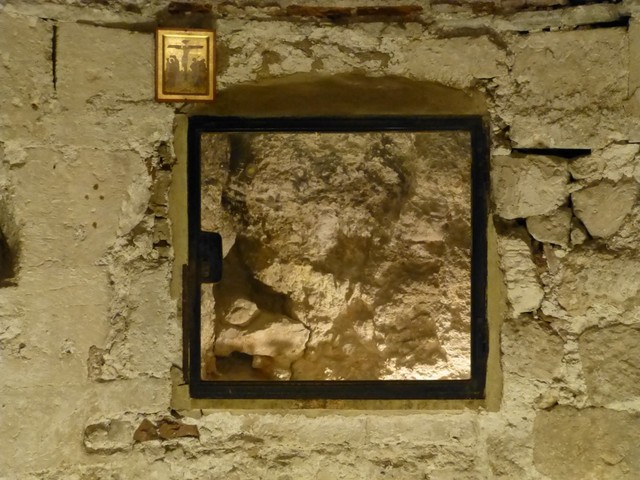
This picture is believed to be the official site of Calvary .
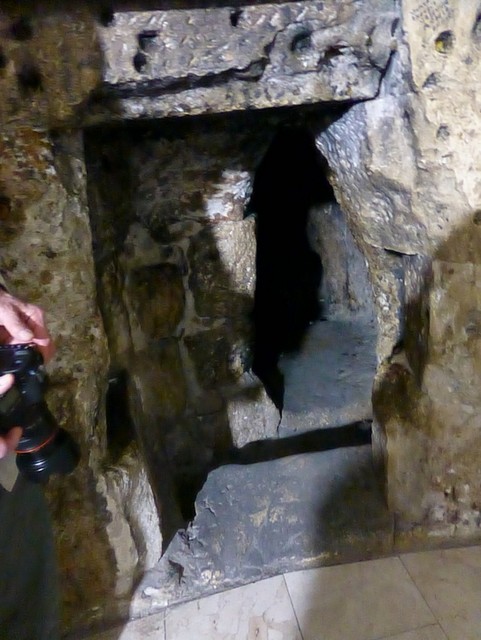
Which leads to the question of: how do we really know where these sites truly were?
During our tour, many of us expressed dissatisfaction that so many “gaudy” Orthodox churches had been built over the sites where Jesus was said to have been born, lived, and died. Pastor Tony had a great answer for this. He said, “Thank God for the churches. If they hadn’t held the place where these things took place, we would never, today, know where they were. Instead, there’d be strip malls and apartment buildings in their place.”
Here is his explanation as best I can give it as a layperson: After Jesus’ death and resurrection, the Christians still living in Jerusalem and Galilee built small memorials over the sites where Jesus had lived and died and worshiped at them. When the Romans destroyed Jerusalem in AD 70 and again in AD135, the Roman soldiers were so infuriated at the signs of Christianity that they tore these sites down and instead built temples to Venus, Jupiter, and other Roman gods in their place and even desecrated the area where the Synagogue had stood by building a temple to Jupiter.
In 335 AD, the mother of Constantine, the Roman Emperor, converted to Christianity and made a pilgrimage to the Holy Land. She tore down all the temples to Venus and other gods and built churches, including The Church of the Holy Sepulcher.
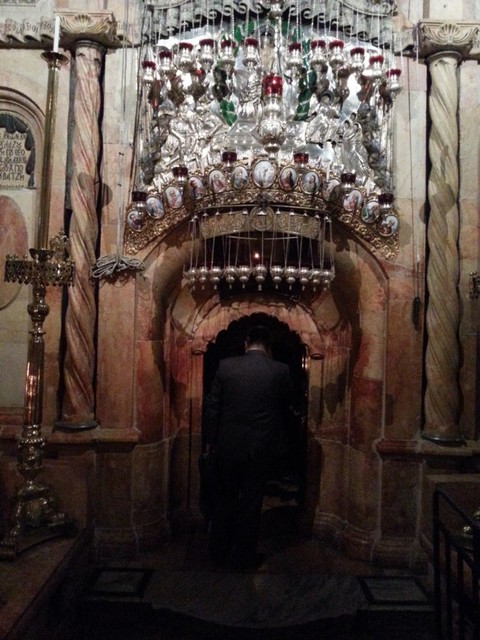
Christians ruled the day in The Holy Land until 635 AD, when Muslims, led by Omar of Persia, invaded, conquered, and built Muslim mosques , except for the Church of the Holy Sepulcher, which he thought very beautiful, and the church in Bethlehem. The Muslims were far more tolerant of Christians and Christian sites than the Romans had been, and although these Christian sites were often destroyed by earthquakes, wars, and fires, they were usually rebuilt shortly after they had been destroyed.
The Muslim religion to this day believes that Jesus was a divine prophet of God. Muslims believed that Mohamed came to Jerusalem in a night vision and ascended to heaven from the temple mount area, so Omar built the Dome of the Rock to commemorate Mohamed’s ascension from this rock. It is the Muslims’ third most holy place today.
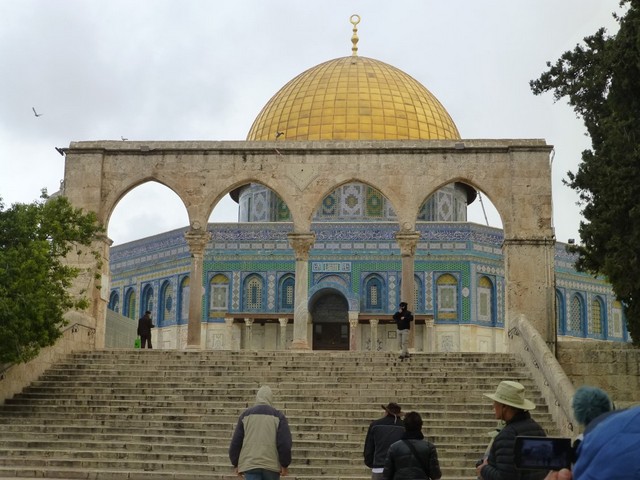
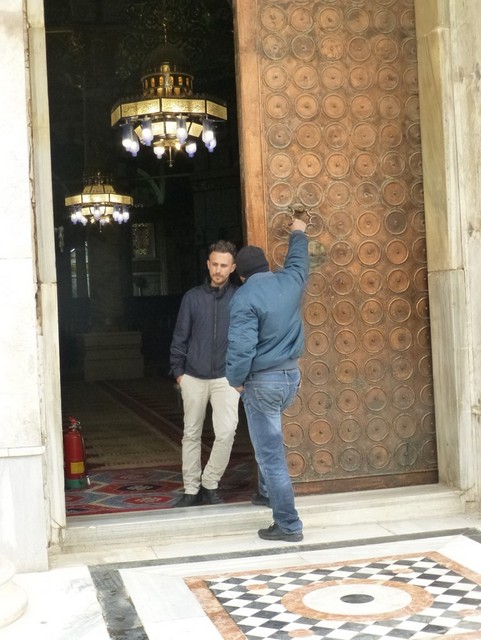
The Jews want to rebuild the temple on this mountain (also called Mt. Moria, where Abraham took Isaac and the Muslims believe Abraham took Ishmael). And some Christian denominations believe that Jesus cannot come again until the Jewish temple is rebuilt. What a mess! And so, except for 200 years, from 1100 to 1300 AD, when the Crusaders from Europe came and “cleared out” the Muslims with their righteous zeal, this land remained mostly Muslim until after World War II and the establishment of the State of Israel and the Exodus of the Jews around the world.
Thus, we have a fair certainty that these holy sites are probably very close to, if not the actual, sites where Jesus lived and died. But even if not, Colette and I still believe that we walked and talked where Jesus walked and talked, we rode on a boat on the Sea of Galilee, we visited his hometown, we saw where he was tried and then put to death. It has had a profound effect on both of our lives, and we will never forget the things we saw in Israel and Jordan.
Just a few other “fun” pictures—I found Middle Eastern Barbies and Kens in Madaba , Jordan—so cute! The owner’s wife makes the modest Jordanian clothes the Barbies and Kens wear.
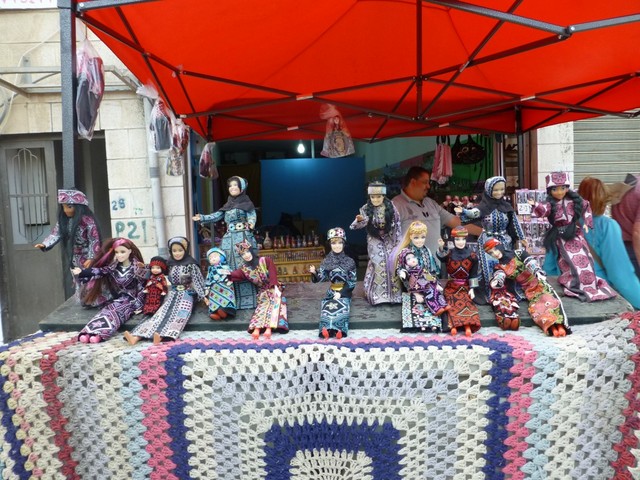

Bob and I totally enjoyed swimming in the Dead Sea , the saltiest and lowest place on earth, 1388 feet below sea level and 36% salt (the ocean is 3.5%, and Salt Lake is 18% salt). We didn’t really swim, just bobbed-it was hilarious. On the bottom were big salt balls as big as marbles, but it was verrry clean! And it felt so good after just having climbed the Masada.
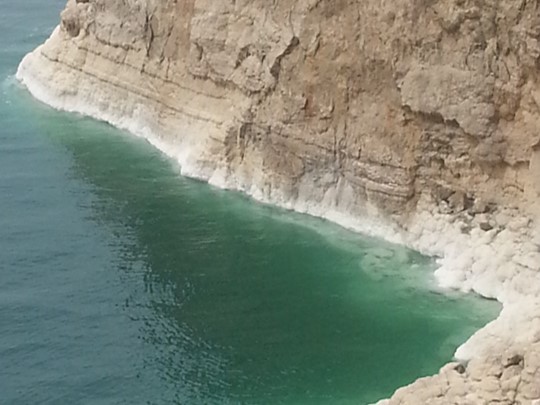
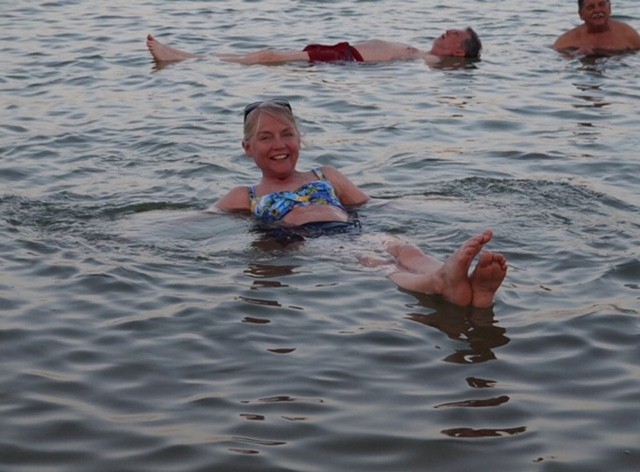
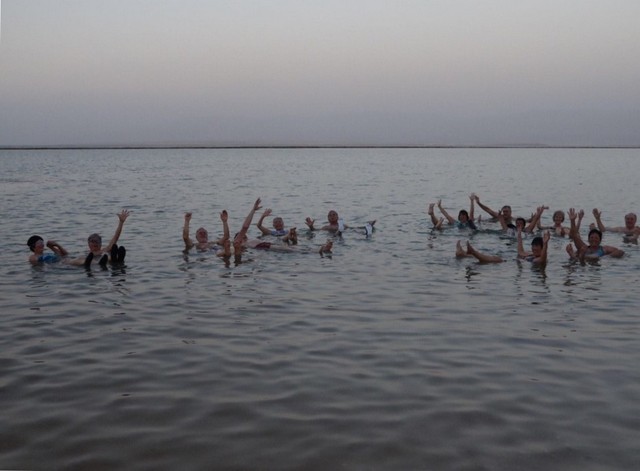
Also, we enjoyed our trip to beautiful Petra and especially our ride on a camel and donkey !

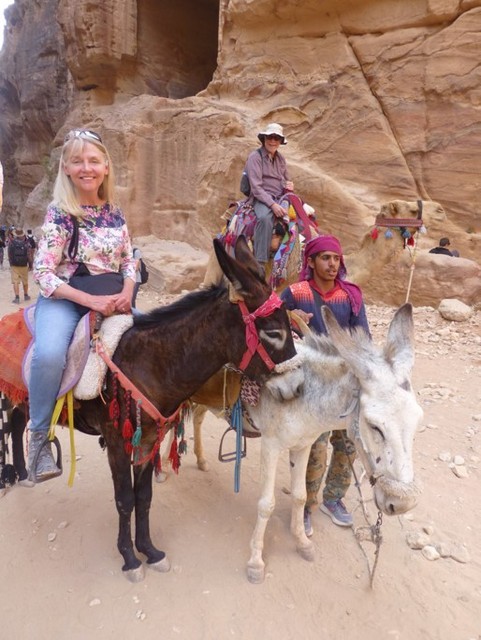
This map is on the top of Mt. Nebo, where Moses died . And we visited a church in Jordan that is built over the oldest known “map” of the ancient world, including Israel and Jordan, made entirely of mosaics.
